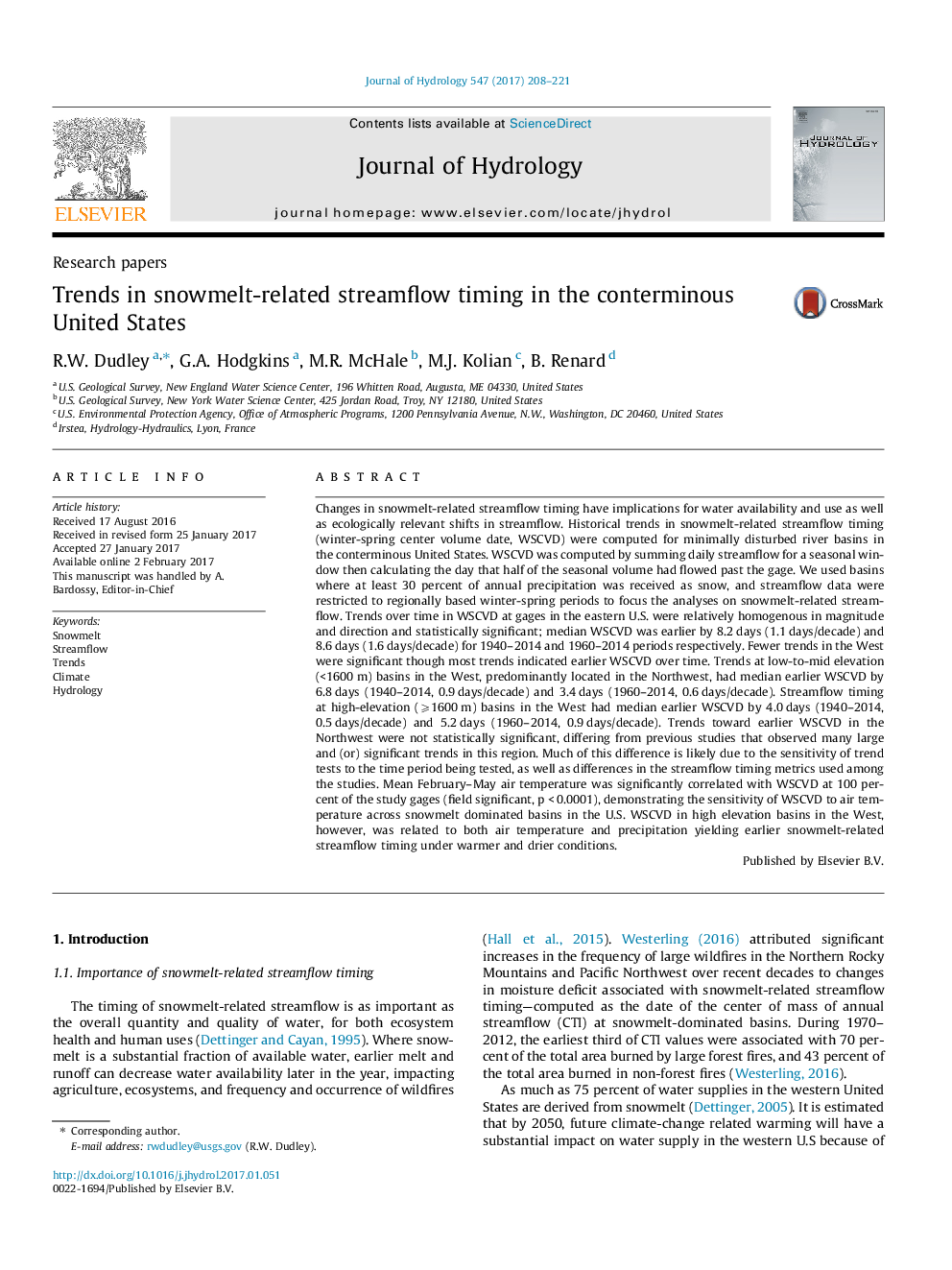| کد مقاله | کد نشریه | سال انتشار | مقاله انگلیسی | نسخه تمام متن |
|---|---|---|---|---|
| 5771041 | 1629907 | 2017 | 14 صفحه PDF | دانلود رایگان |

- Analysis of trends in snowmelt-related runoff timing for conterminous US through 2014.
- Widespread trends toward earlier snowmelt runoff related to warmer air temperatures.
- Timing significantly correlated with February-May air temperature at all study gages.
- Timing at low-elevation West and East basins mostly explained by air temperature.
- Timing at high-elevation West basins explained by both temperature and precipitation.
Changes in snowmelt-related streamflow timing have implications for water availability and use as well as ecologically relevant shifts in streamflow. Historical trends in snowmelt-related streamflow timing (winter-spring center volume date, WSCVD) were computed for minimally disturbed river basins in the conterminous United States. WSCVD was computed by summing daily streamflow for a seasonal window then calculating the day that half of the seasonal volume had flowed past the gage. We used basins where at least 30 percent of annual precipitation was received as snow, and streamflow data were restricted to regionally based winter-spring periods to focus the analyses on snowmelt-related streamflow. Trends over time in WSCVD at gages in the eastern U.S. were relatively homogenous in magnitude and direction and statistically significant; median WSCVD was earlier by 8.2 days (1.1 days/decade) and 8.6 days (1.6 days/decade) for 1940-2014 and 1960-2014 periods respectively. Fewer trends in the West were significant though most trends indicated earlier WSCVD over time. Trends at low-to-mid elevation (<1600 m) basins in the West, predominantly located in the Northwest, had median earlier WSCVD by 6.8 days (1940-2014, 0.9 days/decade) and 3.4 days (1960-2014, 0.6 days/decade). Streamflow timing at high-elevation (⩾1600 m) basins in the West had median earlier WSCVD by 4.0 days (1940-2014, 0.5 days/decade) and 5.2 days (1960-2014, 0.9 days/decade). Trends toward earlier WSCVD in the Northwest were not statistically significant, differing from previous studies that observed many large and (or) significant trends in this region. Much of this difference is likely due to the sensitivity of trend tests to the time period being tested, as well as differences in the streamflow timing metrics used among the studies. Mean February-May air temperature was significantly correlated with WSCVD at 100 percent of the study gages (field significant, p < 0.0001), demonstrating the sensitivity of WSCVD to air temperature across snowmelt dominated basins in the U.S. WSCVD in high elevation basins in the West, however, was related to both air temperature and precipitation yielding earlier snowmelt-related streamflow timing under warmer and drier conditions.
Journal: Journal of Hydrology - Volume 547, April 2017, Pages 208-221